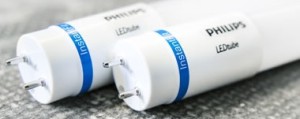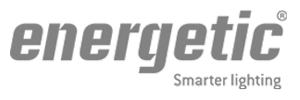 With governments all over the world dimming the light on incandescent light bulbs, Edison’s classic bulbs have become harder—if not impossible—to find in Scottsdale hardware stores. In its place, consumers can choose between three popular lighting alternatives: compact fluorescent lamps (CFLs), halogen lamps, and light-emitting diodes (LEDs) bulbs. All three are also more energy efficient than the classic light bulb, giving you a great reason to switch.
With governments all over the world dimming the light on incandescent light bulbs, Edison’s classic bulbs have become harder—if not impossible—to find in Scottsdale hardware stores. In its place, consumers can choose between three popular lighting alternatives: compact fluorescent lamps (CFLs), halogen lamps, and light-emitting diodes (LEDs) bulbs. All three are also more energy efficient than the classic light bulb, giving you a great reason to switch.
Each light bulb and lamp has its share of pros and cons. In this guide, we take a closer look at what makes each lighting solution tick.
Halogen Lamps
Halogen lamps can be described as souped-up incandescent light bulbs. However, halogen lamps also contain halogen gas, which absorbs and carries the burnt tungsten particles, re-depositing them back to the tungsten filament. This results in a longer-lasting bulb that uses less energy.
Halogens normally have an average rated lifespan of 2,500 to 4,000 hours, and save 10 to 20 percent more energy than incandescent bulbs. They’re also compatible with dimming controllers and are praised for their bright and crisp light.
Recommended Applications
Halogens are best used as reading lamps, display lighting (spotlights) for art and photos, and office lights.
Cons
- Halogens are still significantly less efficient compared to CFLs and LEDs
- Although the upgrade in lifespan is an improvement, it still lags behind CFLs and LEDs
- Halogens can get hot. A room with 5 spotlights will have enough heat to cause air conditioners to work harder to keep temperatures cool, increasing your electricity bill
Compact Fluorescent Lamps (CFLs)
CFLs produce light through fluorescence, a process where mercury gas interacts with phosphorous to create ultraviolet (UV) light when excited by an electric current. The UV light penetrates the interior coating of the fluorescent bulb, creating the color of light you see.
Your average CFL produces the same amount of light generated by a 100-watt incandescent bulb for just 20 to 30 watts. They also have an average lifespan of more than 8,000 hours.
Recommended Applications
CFLs can be used in areas where lighting is needed for extended periods.
Cons
- CFLs contain mercury. When a CFL breaks, the mercury vapors inside can be hazardous to children and pets
- CFL life spans are affected by frequently switching them on and off
- CFLs are incompatible with dimmers
Light-Emitting Diode (LED) Bulbs
LED light bulbs are by far the best choice when it comes to energy-efficiency and lifespan. Your average LED can produce the same intensity of light—some LEDs emit even more—of a 100-watt bulb for less than 10 watts. They also have incredibly long life spans, lasting well over 20,000 hours. They’re free of mercury, generate very little heat, and can be used in lows temperatures.
Recommended Applications
LEDs are used for general residential lighting, commercial lighting, and industrial lighting.
Cons
- They’re more expensive than other light bulb types
- Not all LEDs are compatible with dimmers
- Quirky shapes may be a turn off to customers
So there you have it. If you’re planning to install new lights in your Scottsdale home, this guide should help you decide what bulbs to buy.


 Apartment Lighting
Apartment Lighting Area Lighting
Area Lighting Automotive Lighting
Automotive Lighting Building Wall Pack Lighting
Building Wall Pack Lighting Canopy Lighting
Canopy Lighting High & Low Bay Lighting
High & Low Bay Lighting Industrial Lighting
Industrial Lighting Parking Lots & Garages
Parking Lots & Garages Pathway Lighting
Pathway Lighting Retail Lighting
Retail Lighting Stairwell Lighting
Stairwell Lighting























